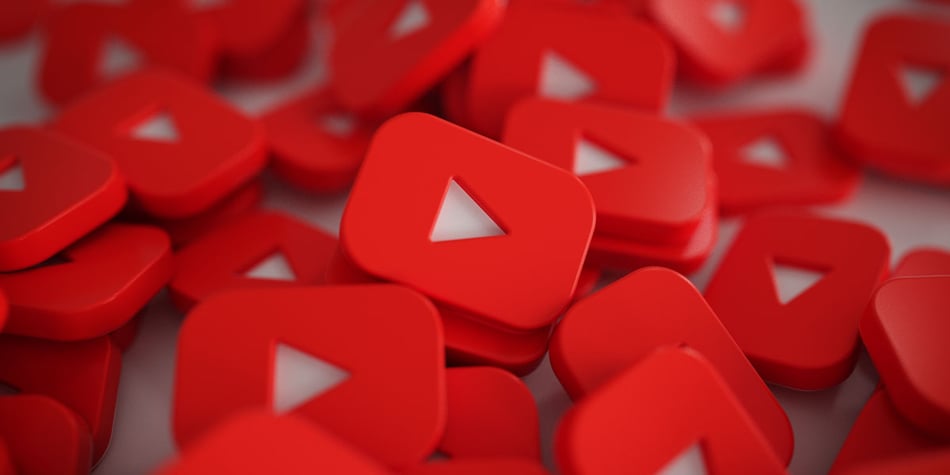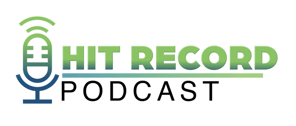Episode 63 -Leveraging YouTube Pre-Roll Ads for Your Bank or Credit Union


Don't Miss An Episode, Subscribe Now

Meredith Olmstead and Ida Burr, of FI GROW Solutions, delve into the evolving landscape of digital marketing for financial institutions, focusing on the impactful role of YouTube Pre-Roll ads. Their discussion sheds light on this innovative strategy, emphasizing its potential to significantly enhance the marketing efforts of banks and credit unions.
Key Takeaways:
1. High Conversion Potential: YouTube Pre-Roll ads stand out for their ability to engage audiences and drive direct conversions, such as completed applications, making them a powerful tool in the digital marketing arsenal of financial institutions.
2. Targeted Engagement: Effective targeting and content strategies are key, with ads designed to be short, engaging, and equipped with a clear call to action.
3. Cost-Effective Campaigns: Budgeting insights reveal that these ads offer a cost-effective approach to digital advertising, with a focus on conversions over mere impressions.
Transcription:
Meredith Olmstead:
Hi there. I'm Meredith Olmstead, CEO and founder of FI GROW Solutions. We are a digital marketing and sales consulting agency. We also do digital ads for banks and credit unions. And I am here with our Digital Ads Manager, Ida Burr. Say Hi, Ida.
Ida Burr:
Hey, everyone.
Meredith Olmstead:
So, Ida and I were chatting just recently, about a new channel basically that we've been testing out for several of our bank and credit union clients. And that is still run through Google Ads, but it is YouTube Pre-Roll. So we were talking about, we've been doing a ton of testing in several different markets for a number of different clients and also with variety of budgets, big budgets and small budgets. And I was like, "You know what Ida, let's pause. Let's push record on this. Let's talk about this for our audience." Because I think there's some really great takeaways that we want to make sure that people under understand about the potential for leveraging YouTube Pre-Roll ads for your financial institution.
So Ida, let's just dive in. Okay? First of all, what are these? I mean, I think we all kind of know what YouTube ads are. When you go to YouTube, basically it's kind of like you have to pay to play. You have to watch an ad pretty much before every single video there. So this is obviously what we're talking about, is these Pre-Roll ads. But can you explain the placements, the targeting, how they work, that kind of thing?
Ida Burr:
Yeah. So like you said, these videos, they start before you get to watch the video that's on YouTube. So, there is an ad that pops up. Usually they are skippable, so after the first five seconds, you're able to hit that button and skip the ad and go onto your video. But they are very condensed, usually pretty sure, and they have very clear call to action.
Meredith Olmstead:
Okay. And so if a credit union or a bank wants to play with these, you're recommending we do them... We typically do these like any other digital ad. So it's not necessarily a display ad where you're just wanting to get an, "Oh, we're here.", with a tagline. It can be some brand awareness, but you want a clear call to action, right?
Ida Burr:
Yes. And you want it to link to a product page.
Meredith Olmstead:
Or some other kind of page that has a conversion on it. Correct?
Ida Burr:
Yes.
Meredith Olmstead:
Okay. All right. And what about targeting? How are you targeting these? Because I know in search ads, you target based on what people are searching for like keywords. But how are these targeted or how can people target these?
Ida Burr:
So, you can retarget existing lists or your website traffic. You can just create a pretty broad audience of the area you're looking to target. And also, you could target with interests, so what people... like their past behaviors, what shown interests they have. Before you start running these, I would suggest going into the settings and excluding certain types of content that you don't want to show up. And YouTube especially whatever video is coming on after your video, you can exclude certain types of videos.
Meredith Olmstead:
Oh, interesting. Okay. So, to try to make sure maybe you're lining up with an audience that's kind of financially minded or maybe a little more serious or all that kind of thing. Okay. Why do we think that... I mean obviously search ads are for when people are actively in market looking for a product or service. Why are we recommending that people try YouTube ads? What's the benefits of trying these ads?
Ida Burr:
Well, we had one client last year run these ads for almost the entire year. And we actually saw excellent results. We were getting conversions from these ads at a much higher rate than display ads in the past. And we have even seen finished applications from these YouTube ads. So, they're definitely resonating better with people than just the display ads and just pushing out a message out there like that. These are helping convert and get finished applications.
Meredith Olmstead:
Gotcha. So with a display ad you oftentimes, these are the banner ads or the side-by-side ads that you see sometimes when you're going around the internet. People tend to tune them out or they see them when they're not in market for a product or service. So it can be good for brand awareness, but it doesn't necessarily usually drive conversions. So you tend to get a large impression, like large numbers of impressions, maybe even some clicks, but not a lot of conversions. So, what you're saying is that these ads tend to perform a little bit like display ads in that they drive a lot of impressions, but that they're also driving conversions. So, they can be getting you a few more people actually turning into leads.
Ida Burr:
Yes.
Meredith Olmstead:
Okay, gotcha. And then what other reasons are there to try them? I mean, you can't target based on income, you can't target based on zip code. You can target radiuses around a branch location, but who else is watching these ads?
Ida Burr:
So these tend to skew pretty towards the younger side of the spectrum as well, just naturally because YouTube's demographic just skews younger. So, it is a good way to get front of that younger audience without actually targeting it. Because with these ads, we're not able to target based on age. But it is a really good placement just to get in front of that younger audience.
Meredith Olmstead:
And then also, it's just less interruptive than a regular traditional TV advertisement. People are expecting it, so it's not as jarring. People don't skip it or tune it out as much or walk away because they know it's short 15, 20 seconds, or a five-second skip option. You have to front load it, obviously your call to action at the beginning, but it's a really good opportunity to get in front of people while they're waiting to see what they're going to watch next. Okay, cool. What about budgets? What kind of budgets are you recommending for clients to start with or use on these kinds of ads?
Ida Burr:
So, they definitely don't need the same budget as a search campaign would. You can phone that back a few hundred dollars a month. We usually start around four to $500 a month and kind of grow from there, depending on how big the audience is and what the frequency turns out to be on those ads. And you'll notice the cost per click will be around the same as the search campaigns are, as long as they're all in the same market. So we're talking about specific markets, if you're targeting the same markets.
And also the completed applications, they do tend to cost a little bit more for these campaigns, just because with search you're getting people who are really in market and ready to convert 'cause actively searching for those keywords. But we are seeing the completed applications at little bit of an inflated cost compared to search. But they're there and generating great traffic.
Meredith Olmstead:
Whereas in a display campaign, it wouldn't be uncommon for you to have 500,000 impressions and zero conversions basically.
Ida Burr:
Yes, exactly.
Meredith Olmstead:
I think we tend to... Just off the top of my head, I know when looking back at some different ROIs, depending on the market obviously and the budgets that are being spent and competition, we can see completed applications costing anywhere from $80 per completed application up to upwards of like 110, $120. Somewhere in that range tends to be, for a fully completed application, tends to be some of the costs that people can kind of use as a ballpark number, when they're talking about these ads. And so definitely able... You want to make sure that you're... Now, when people are setting these up, when you're working with an agency who's, say, running these for your financial institution, are there mistakes that you want to make sure that they're avoiding or that you aren't making when you're setting these up?
Ida Burr:
So, you want to really keep the text to a minimum. You're going to want to have a voiceover in it because on YouTube, these people are listening to the video versus other placements, they may have it muted and you do need to be more text heavy. So with these ads, we suggest a voiceover that talks. You need to really focus on keeping the video short. They say, I think up to 30 seconds, but really we like to see them 15 to 20 seconds, if possible.
Meredith Olmstead:
And some kind of value prop even in the first five seconds, if you can get it in there, right?
Ida Burr:
Yes. So definitely a very early on call to action, just very front load. First five seconds, you should really try to get your message out there.
Meredith Olmstead:
And I know that they also have, when you place the videos, the YouTube ad platform itself has built-in captions for if they have it muted. So, you don't have to caption it. And then it also has the little call to action button in the bottom left, correct?
Ida Burr:
Yes. Yeah, so on the bottom-
Meredith Olmstead:
Okay. So you want to make sure if you're putting things on the screen, you don't have any competing texts going on in the bottom left-hand screen. And you can actually download from YouTube, from the Google Ads network, you can actually download, it comes with a frame that you can use to make sure you don't put text in the wrong place on the video. Correct?
Ida Burr:
Yes. They have it grided out for you.
Meredith Olmstead:
Okay. And sometimes you see where you can skip ads and then sometimes you have YouTube ads where you can't skip them. What's the difference in those?
Ida Burr:
So with the skippable ads, you can pick what objection you want the campaign to have. So you can have it for impressions, clicks, conversions, what you want the optimization to be for. For the non-skippable ads, the only option you have is for views. So we really like to optimize our ads for that full conversion, not just for impressions. So we tend to stick with the skippable ads, just so we have more available options.
Meredith Olmstead:
Gotcha. So it's worth it to have more people skip the ad who aren't interested in converting basically, and still optimize for conversions, versus have the skippable ads that you can't skip at all. Potentially, maybe the non-skippable ads are ones that are just for brand awareness if you really want to pay for eyeballs to have to watch the whole thing. But if you're trying to drive conversions, you would definitely not want to exercise that option. You would want to keep them skippable, and always optimize for conversions. Okay, cool.
That's a really important thing for all digital ads, right? Because a lot of times, you can have agencies that are dumping budget on impressions and clicks when that traffic isn't optimized for conversions. And those people aren't the people that Google knows have the tendencies to fill out forms and applications online. All right, awesome.
Well, very useful stuff, Ida. Thank you so much for sharing these great results. And thanks for listening, you guys. And if you're interested in learning more about our digital ad services or any of our other services, feel free to join us over at FI GROW Solutions or figrow.com. And we have lots of other podcasts and case studies and all kinds of information about how to get your message out there. But in the meantime, let's just all get out there and make it happen.







Blog comments